| Reactivity: | H,M,R |
| Applications: | IHC/IF |
| Host Species: | Rabbit |
| Clonality: | Polyclonal |
| Full Name: | LIMK1 rabbit polyclonal antibody |
Gene Name: | LIM domain kinase 1 |
Synonyms: | LIMK1, KIZ-1, LIM motif-containing protein kinase |
Immunogen: | Recombinant protein corresponding to Mouse LIMK1 |
Isotype: | IgG |
Purity: | Affinity purification |
Subcellular location: | Cytoplasm, Nucleus |
Uniprot ID: | P53668, P53669 |
Product Usage Information
Applications | Species | Dilution | Positive Sample |
IHC/IF | Human, Mouse, Rat | 1: 750-1: 4000 | breast cancer, lung, spinal cord, testis |
Background
LIMK1, a member of the Ser/Thr protein kinase family, may be a component of an intracellular signaling pathway and may be involved in brain development. It phosphorylates and inactivates the actin binding/depolymerizing factor cofilin and induces actin cytoskeletal changes. The LIM domain interacts with the cytoplasmic domain of NRG1, and this cytoplasmic protein also binds ROCK1, which phosphorylates LIMK1 on serine and/or threonine residues. Highest expression occurs in both adult and fetal nervous systems.
Images
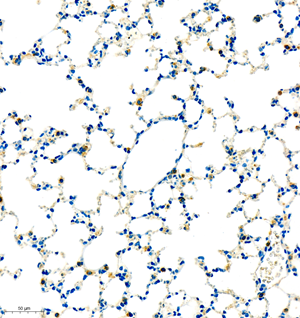 |
Immunohistochemistry of paraffin embedded mouse lung using Limk (GB11994) at dilution of 1:2000 (250x lens) |
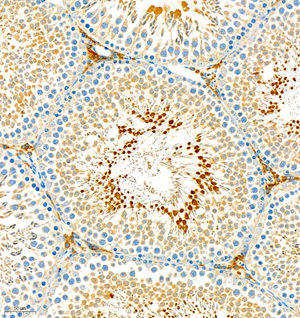 | Immunohistochemistry of paraffin embedded rat testis using Limk (GB11994) at dilution of 1:2000 (200x lens) |
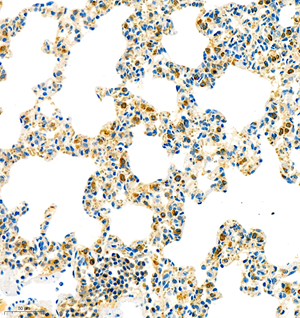 | Immunohistochemistry of paraffin embedded rat lung using Limk (GB11994) at dilution of 1:2000 (250x lens) |
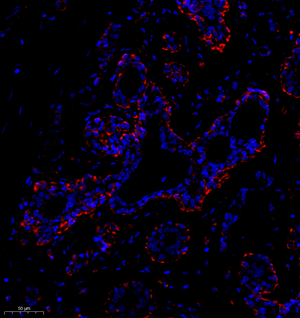 | Immunofluorescence of paraffin embedded human breast cancer using Limk (GB11994) at dilution of 1:1500 (250x lens) |
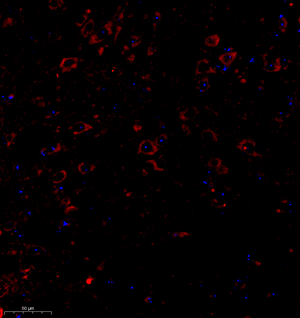 |
Immunofluorescence of paraffin embedded mouse spinal cord using Limk (GB11994) at dilution of 1:1500 (300x lens) |
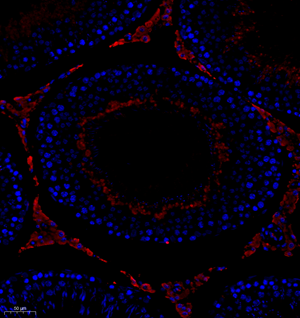 |
Immunofluorescence of paraffin embedded rat testis using Limk (GB11994) at dilution of 1:1500 (200x lens) |
 |
Immunofluorescence of paraffin embedded rat lung using Limk (GB11994) at dilution of 1:1500 (250x lens) |
Storage
| Storage | Store at -20°C for one year. Avoid repeated freeze/ thaw cycles. |
| Storage Buffer | PBS with 0.02% sodium azide, 100 μg/ml BSA and 50% glycerol. |
